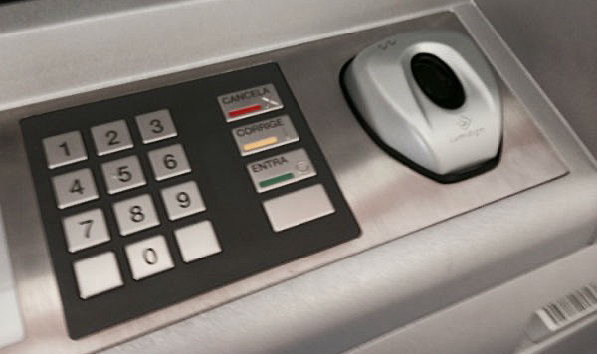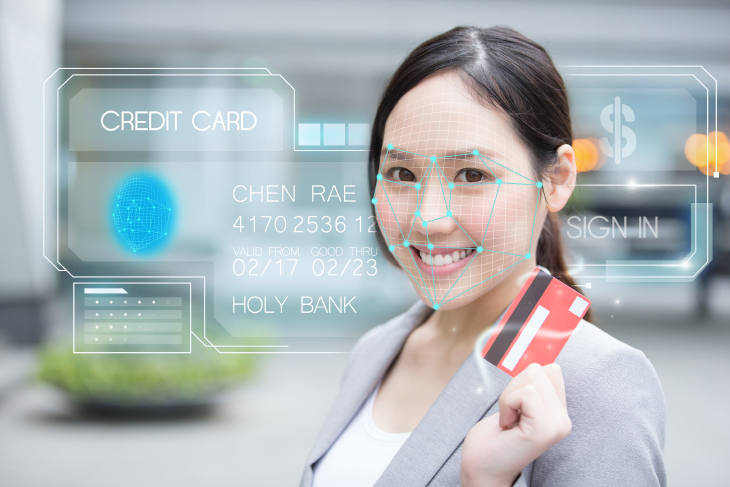Making Banking Services More Accessible — and Secure.
Think of going to the beach and not having to carry a wallet, cash or anything but your sunscreen and towel. Would you enjoy the beach more? Would you be relaxed knowing that all your belongings are safe at home, and not needing to constantly watch your bag or wonder if someone saw you hide your valuables?
What if you were still able to get cash out of an ATM to buy a cool drink even though you have no cash or bank card with you? Maybe even meeting up with some friends for a bite on your way home?
This technology is available in Brazil today, where people can simply walk up to an ATM and withdraw up to $100 from their account with just their fingerprint.
They are able to withdraw money from the ATM with just their fingerprint — without a bank card, a phone or anything else. This is a profoundly positive user experience as it meets the intrinsic needs of the customer: convenience and security.

What’s Next Beyond Fingerprint?
While fingerprint biometrics are widely used by the banking and financial industry, facial recognition is becoming increasingly popular as a method to further strengthen security and improve the user experience. Incorporating facial recognition with fingerprint provides a new and exciting user experience. It makes accessing banking services more convenient and seamless, resulting in less time waiting in line and a stronger sense of security.
Facial recognition technology has seen significant improvements in recent years. The recent advances in artificial intelligence (AI) and machine learning technologies have fueled improvements in matching-speed and performance, making facial recognition faster, more accurate and harder to be hacked.
For example, with advanced liveness detection and presentation attack detection (PAD) algorithms, facial recognition technology can protect systems from spoofing attacks using mobile phone displays, tablets and monitors, photographs, paper puppets or 3D masks, while accepting legitimate individuals wearing eyeglasses and face masks.

Added Convenience, Speed and Security with Biometrics Multi-Factor Authentication (MFA)
At the ATM
Combining fingerprint and facial recognition provides the MFA that allows people to access ATMs much faster by eliminating the need to insert a card and type a PIN. This reduces the time spent at the ATM and improves the user experience because there is no PIN entry that can be seen, and no card being used that can be skimmed — all while retaining a high level of security.
A simple scan of the face and a quick capture of the fingerprint is all it takes to initiate any ATM transaction!
In the Bank
Incorporating facial recognition as the first factor of authentication allows financial institutions to recognize the customer approaching the counter and pre-loads their account information for the teller. Once the customer lays their finger on the fingerprint reader, the second factor authentication is performed, identifying the customer without them needing to take out their wallet or ID. It also allows the teller to greet the customer by name, while increasing efficiency of services that results in less time waiting in line.
Remote Banking
Another way facial recognition helps customers access banking services is incorporating facial recognition capability into online and mobile banking applications. Facial recognition enables secure remote account onboarding without the applicant having to walk into a branch office. It also allows a person to log in to their account by simply looking into the mobile device without a username and password. Most of us can attest that manually entering a password can sometimes take several tries or lead to being locked out due to multiple errors — causing delay and frustration.
Fraud Prevention
Biometrics MFA can also be used for loan applications, using the face to validate presence and identity, and the touch of a finger to validate intent to sign. This dramatically reduces identity and transaction fraud.
As you can see, the ability to quickly and securely access services inside and outside the bank will transform the way we experience banking. Fingerprint — and now facial recognition — technology are playing an important part in making banking services more accessible and secure.
It is undoubtedly a useful tool that can automate numerous facets of our lives and we already carry it with us wherever we go!
Interested in learning more? Download the white paper Biometrics at the ATM.
